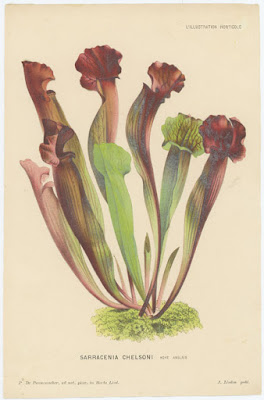Sunday, March 11, 2018
Resilient Collard Greens Plants. 3.11.18
This is different. These are old collard greens plants that I pulled
out last fall to clean up a garden bed. I threw them into the chicken
yard so the hens could pick them clean, and left them in the sun for a
couple of weeks. The stems were still firm, so I thought, wonder what
will happen if I replant them. So I did. They survived the winter, and
are making new crowns of greens on the top again. Those are resilient
plants. We've been eating greens from the collard greeen plants all winter long. This is the 3rd year for these chicken-rescue plants.
Saturday, March 10, 2018
Planting Potatoes. 3.10.18
Today I planted potatoes. I cut these seed potatoes into chunks and let the dry, and sprout, for a couple of weeks in a window sill.
This year I'm planting them in trenches, instead of shallow & hilling them up. We'll see how that works out. I think deeper will mean less watering during the summer. I planted a foot deep, but barely covered the starts with soil. As they grow, I'll fill in the trenches until they are up to ground level.
Next come the Russets They grow more slowly and harvest is later. That's nice because it spreads out the harvest. In 2017, by planting different types at differerent times, and storing in a cool dry pantry, I had home grown potatoes for 6 months
This year I'm planting them in trenches, instead of shallow & hilling them up. We'll see how that works out. I think deeper will mean less watering during the summer. I planted a foot deep, but barely covered the starts with soil. As they grow, I'll fill in the trenches until they are up to ground level.
Next come the Russets They grow more slowly and harvest is later. That's nice because it spreads out the harvest. In 2017, by planting different types at differerent times, and storing in a cool dry pantry, I had home grown potatoes for 6 months
Friday, March 09, 2018
Carnivorous Plants. 3.9.18
I decided to try a few carnivorous plants. I don't know anything about them. I bought via mail order, 3 pitcher plants (Sarracenia hybrids) and one Venus Flytrap. Based on the nursery information, these can be grown entirely outdoors in this Western WA climate. These plants require bog-like conditions, so are grown in containers in a peat moss based mix, half submerged in rain water or distilled water - not tap water or well water, which are too high in minerals. We'll see if they survive or grow. These are tiny, in 4 inch pots now. They should grow quite a bit larger, I think
The old book print is what the pitcher plants should look like when they mature. I use old vintage images because the copyright should be expired. If someone thinks otherwise, please let me know.
The Venus Flytraps (Dionaea muscipula) seem smaller. I couldn't find a good public domain print so that will have to wait until it grows, for a better photo.
The old book print is what the pitcher plants should look like when they mature. I use old vintage images because the copyright should be expired. If someone thinks otherwise, please let me know.
The Venus Flytraps (Dionaea muscipula) seem smaller. I couldn't find a good public domain print so that will have to wait until it grows, for a better photo.
Sunroom Orchids. 3.9.18
 |
| Cymbidium Orchid. 3.9.18 |
 |
| Yamamoto Dendrobium. 3.9.18 |
 |
| Yamamoto Dendrobium. 3.9.18 |
Reformed Raised Beds. 3.9.18
During the winter, I rebuilt two of the raised beds, converting from wooden sides to concrete blocks. The blocks are collected from various other old projects, so were free. These beds are taller than the old wooden beds, so easier to work in.
I have one more bed to replace. This time, I had to buy the blocks. They clost slightly over a dollar each, with 36 blocks being needed, so that bed will be about $36 to build. Not bad.
I also reused some decking planks to rebuild 3 of the wood sided beds to a higher level to be easier to work. The wooden beds are starting to degrade. I don't ecpect them to last a lot longer.
I'm being careful to use the raised beds only for plants that seem to benefit from that method. Peppers do really well, because they like the warmer soil. It's easy to keep the soil surface nice and weed free. Chinese chives and other alliums are also easier to keep clean and weed free in the beds. Strawberries, being small plants, benefit similarly. So these beds are mainly Chinese chives, strawberries, Egyptian Winter Onions, some of the garlic, and one will have pepppers.
I have one more bed to replace. This time, I had to buy the blocks. They clost slightly over a dollar each, with 36 blocks being needed, so that bed will be about $36 to build. Not bad.
I also reused some decking planks to rebuild 3 of the wood sided beds to a higher level to be easier to work. The wooden beds are starting to degrade. I don't ecpect them to last a lot longer.
I'm being careful to use the raised beds only for plants that seem to benefit from that method. Peppers do really well, because they like the warmer soil. It's easy to keep the soil surface nice and weed free. Chinese chives and other alliums are also easier to keep clean and weed free in the beds. Strawberries, being small plants, benefit similarly. So these beds are mainly Chinese chives, strawberries, Egyptian Winter Onions, some of the garlic, and one will have pepppers.
Subscribe to:
Posts (Atom)



